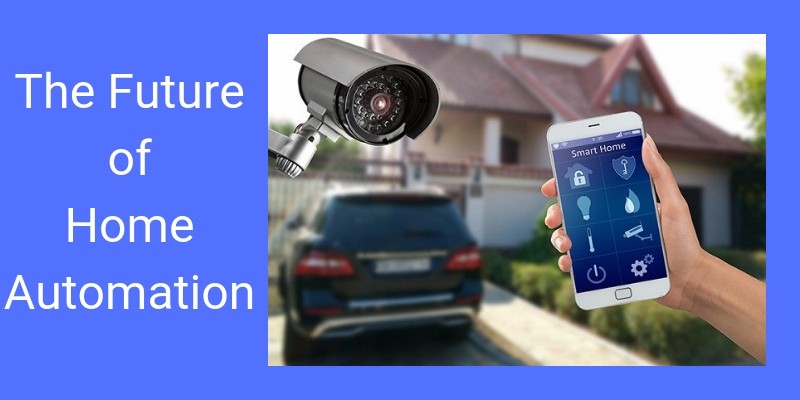Home automation is relentlessly improving and evolving to provide more ease and convenience to our lives. Today, an automated house (or smart home) refers to a residence that has security, lighting, appliances, and other home systems that can be remotely controlled with the help of a smartphone or other smart devices.

In addition, with home automation systems, homeowners can get real-time notifications regarding the temperature of the room, contents of the refrigerator, or unusual activities at home.
According to a research firm, Allied Market Research, the global home automation market was pegged at $39.6 billion in 2016 and is expected to reach $81.64 billion through 2023, registering a CAGR of 11.2% from 2017–2023.
Technological advancements in the home automation have increased so rapidly in the last few years that it is hard to pinpoint the most salient trends in the market.
However, complete connectivity is the main feature that drives the market along with the technological advancements in the internet of things (IoT), artificial intelligence (AI), and voice assistance.
Security
To keep home secure in every possible way is the prime reason why people opt for home automation in the first place. Home automation has moved beyond the traditional alarm systems, safety sensors, and continuous monitoring.
The alarm industry has evolved drastically in the past few years, incorporating facial-recognition cameras and remote locks. Today, alarm security involves smart locks, cameras, and video doorbells.
Houseowners can integrate smart security technology into home automation to lock the doors and turn on an alarm system when you leave the house. In addition, the smart security systems offer fire alarm and warning against electrical overloads and other household hazards.
Voice assistance and IoT applications
When it is possible to dim the lights or tell home what to do just by a command, why bother doing the physical exertion!
Amazon’s Echo and Google assistant are helping even the unwitting consumers to realize how a voice control system can make their lives easier.
In fact, the popularity of Amazon’s Alexa has forced users to opt for home automation and buy various voice controllable products such as remotely controlled lights, thermostats, and music systems. Thus, the leading companies such as NEST, Lutron, Amazon, and Sonos are focused on developing voice-controllable products.
From cloud to edge and now to fog
In the older versions of home automation, most of the heavy work was performed on local servers or within the intelligent device itself.
However, the advent of cloud processing has provided more intelligence to the connected devices and ecosystems.
The recent innovations in security and home automation use a huge amount of local storage and time for processing. Thus, the leading cloud computing companies are bringing computation at the edge and even fog.
The decreasing size of silicon has enabled edge devices to perform system-wide integrations and analytics without having to query the cloud.
For instance, the facial recognition system at the door can perform the recognition within a camera itself and send only the results–such as the name of the person–to the cloud, instead of sending the entire video footage of the guest.
AI and sensor technology
AI, machine learning (ML), or predictive analysis has gotten extremely big in the consumer market over the past few years.
The momentum started with the launch of NEST thermostat, which guessed user’s preferences and habits to automate the temperature control without human intervention. Moreover, Alexa improved its speech-recognition with the help of ML as it learned from its mistakes and used data from millions of users.
True automation is becoming reality, thanks to developments in the sensor technology. Today’s sensor technology is so evolved that it does not restrain itself to one particular task.
This is the era of multipurpose sensors. For an instant, a motion sensor measures the ambient lighting, air quality, environmental conditions, sound, and much more. The more they observe, the more efficiently a house can be automated.
That being said, the biggest and most highlighted trends in home automation can be summed up in one word: connectivity. Every digital device can be connected to each other and ultimately to the cloud is expected to lead the home automation market in the future and is most likely to help develop more inventions.
One of the leading wireless protocols for providing this total connectivity concept is the Z-wave protocol which provides both connectivity to a central hub and also connectivity between smart devices themselves.
About the Author:
Sharmistha has always had a keen interest in reading and writing. Though an engineering graduate, she forayed into the field of writing due to her love for words and the urge to do something different. Allied Market Research has given her the chance to gain knowledge about different subjects. She aspires to make each of her written works a piece of art.
Leave a Reply